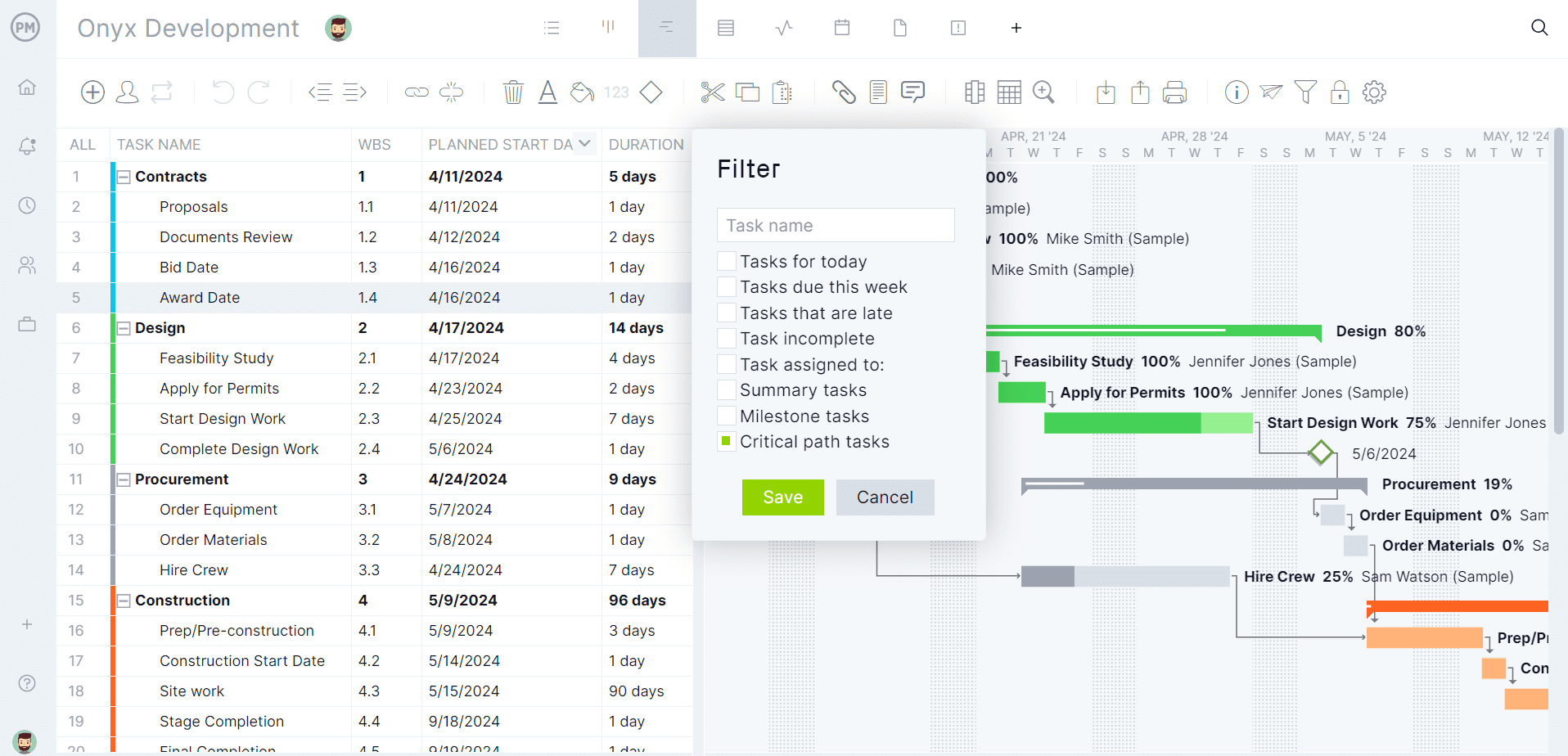Gantt charts are one of the most effective tools in project management because they transform complex plans into clear, actionable visuals. Whether you’re managing a small team or a large-scale initiative, Gantt charts help organize work, align resources and track progress over time.
In this blog, we’ll discuss the main benefits of a Gantt chart as a project management tool. However, before we get started, it’s important to note that not all Gantt chart software can provide these Gantt chart benefits, as their features and levels of complexity can vary significantly.
For example, ProjectManager has a powerful Gantt chart that stands out from other project management software. It combines real-time syncing, ease of use and integration with broader project tools.
Unlike many Gantt charts that require manual updates or lack flexibility, ours auto-updates across views, including task, calendar and sheet views as well as kanban boards. This keeps everyone working on the same page.
The Gantt chart itself is full of features for managing projects. It schedules tasks, resources and costs, but can also link all four types of task dependencies to avoid cost overruns and bottlenecks. Once you set a baseline, you can track progress in real time. Get started with ProjectManager today for free.
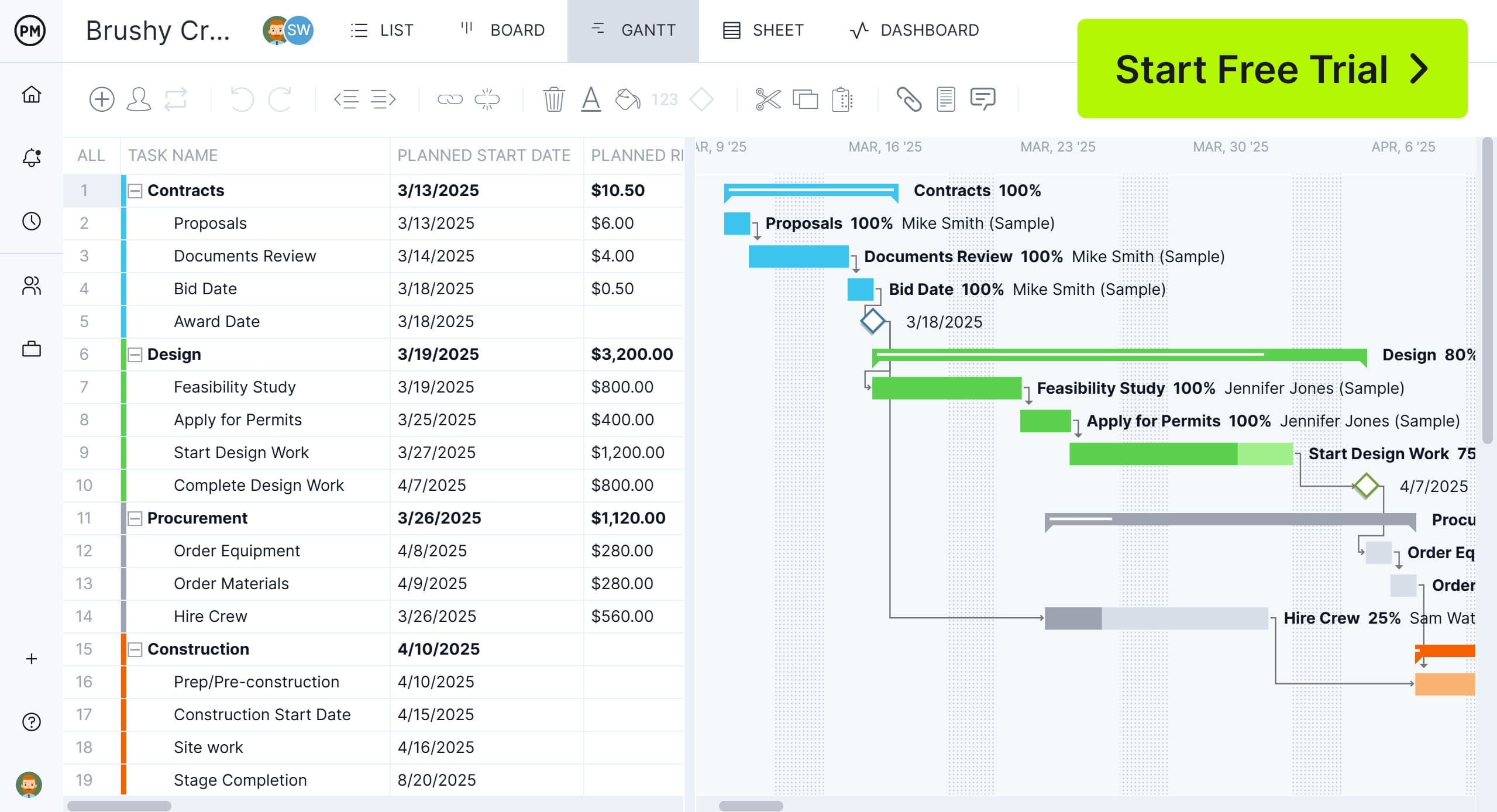
1. Create Easy-to-Understand Project Timelines
Gantt charts simplify complex project schedules by presenting them as horizontal bar charts over a calendar-based timeline. Each task is mapped to specific calendar dates, allowing everyone to see when work starts, how long it lasts and when it ends. (We’ll illustrate the benefits of a Gantt chart by showing screenshots from ProjectManager below.)
This calendar view offers one of the main benefits of a Gantt chart, as it helps project team members and stakeholders who might not be project management experts to understand the project flow in real-world time—days, weeks, or months—rather than abstract phases. It becomes much easier to coordinate tasks, spot overlapping work and manage deadlines. Whether for internal use or stakeholder updates, a Gantt chart offers a clear, visual schedule that aligns with how we naturally view time.
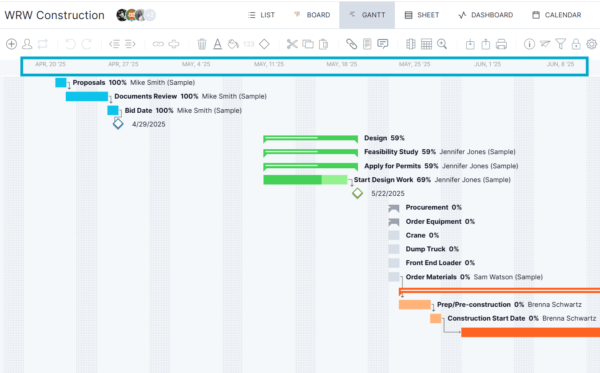
2. Represent Task Dependencies Visually
One of the key advantages of a Gantt chart as a project scheduling tool is its ability to represent task dependencies with visual connectors. You can easily show which tasks must be completed before others can begin, helping identify potential bottlenecks and prevent delays.
These dependencies—whether finish-to-start, start-to-start, or other types—allow project managers to understand the sequence of work and manage timing effectively. With a visual map of interdependent activities, teams can prioritize better, coordinate across departments and react swiftly to scheduling conflicts or changes, making the entire workflow more efficient and less prone to miscommunication.
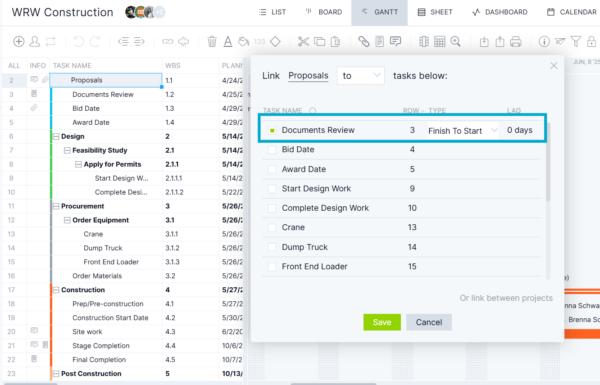
3. Integrate Project Scheduling, Resource Planning and Cost Tracking
Modern Gantt chart tools go beyond basic scheduling—they serve as an integrated solution for planning resources and tracking costs. You can assign team members to tasks, set budgets and monitor labor hours in one place.
This alignment of schedule, resources and financial data ensures that every aspect of the project is considered and managed efficiently. When everything is in a single chart, you reduce the need for separate spreadsheets or tools and create a central hub for managing time, people and money. This integration leads to smarter decision-making and better control over project execution, highlighting the benefits of a Gantt chart for holistic project management.
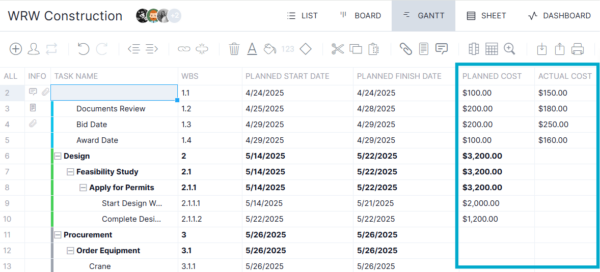
4. Compare Planned vs. Actuals
Gantt charts help project managers stay on top of progress by comparing planned timelines with actual performance. Some project management software includes baselines that show the original plan alongside real-time updates, making deviations easy to spot.
This comparison helps identify delays, resource issues or scope changes early, so corrective actions can be taken promptly. Monitoring planned vs. actual timelines is also essential for reporting and continuous improvement. Teams can learn from past projects, improve forecasting accuracy and keep stakeholders informed about how closely the project is following its intended schedule.
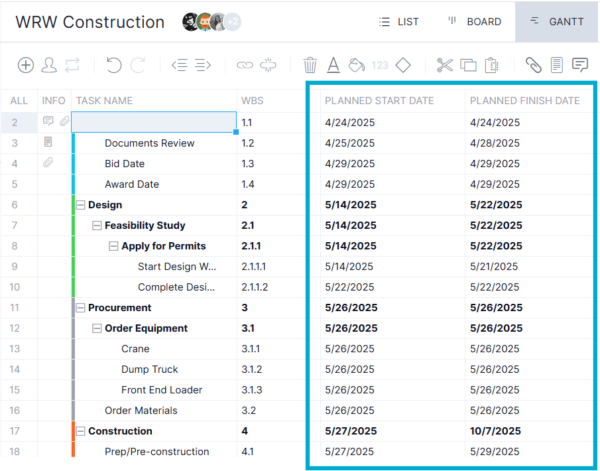
5. Identify the Critical Path of Projects
The critical path is the sequence of dependent tasks that determines the minimum time required to complete a project. If any critical task is delayed, the entire project is affected. By identifying and monitoring the critical path, teams can allocate resources more effectively, prioritize high-risk tasks, and maintain tighter control over the schedule.
However, this is one of those benefits of a Gantt chart that can only be obtained from certain tools, as this isn’t a feature included in every Gantt chart tool by default. Tools with this capability can highlight the path automatically, allowing project managers to focus on activities directly impacting deadlines.

6. Visually Track the Percentage of Completion of Tasks
Progress tracking is more intuitive with Gantt charts displaying the percentage of completion for each task. These visual indicators—often shaded bars or progress markers—give teams and stakeholders instant insight into what’s done and what remains.
Among the benefits of a Gantt chart is the ability to instantly assess task status without reading lengthy project management reports or requesting updates. This helps improve accountability, ensures transparency and supports more accurate progress reporting. It also encourages team members to stay on pace, since they know their work is visible and contributes to the overall project momentum.
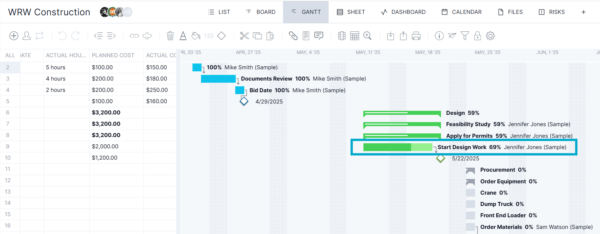
7. Plan Various Project Scenarios
Gantt charts are a powerful tool for scenario planning. You can create multiple versions of a schedule to see how different timelines, resources or priorities might affect your project. This flexibility allows teams to test assumptions, plan for risks and adjust proactively before issues arise.
The advantages of a Gantt chart include the ability to simulate “what-if” scenarios and explore alternatives in real time. For example, if a task gets delayed or a resource becomes unavailable, you can simulate alternatives and choose the best path forward. This “what-if” planning helps reduce uncertainty, supports contingency plans and ultimately leads to more resilient project strategies.
8. Represent Milestones and Make Milestone Charts
Milestones are key checkpoints in a project, and Gantt charts make them easy to visualize. Represented as diamonds or markers, milestones denote important deadlines, approvals or phase completions.
They help structure the project timeline and ensure progress aligns with strategic goals. Milestone charts are particularly useful in presentations and reports, offering a high-level summary without overwhelming stakeholders with task-level details. By tracking milestones, teams stay focused on major deliverables and can celebrate key achievements, keeping morale high and the project on course.
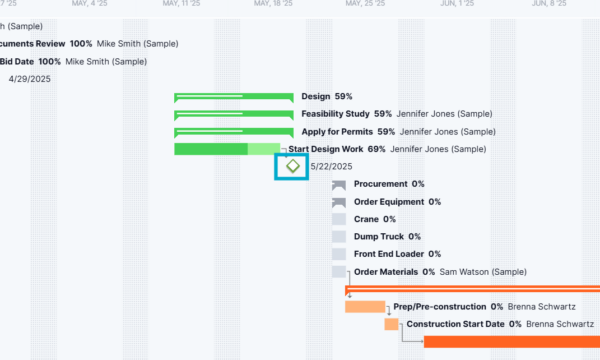
Free Gantt Chart Template
Those not ready to upgrade to project management software can download this free Gantt chart template for Excel. It displays tasks along a timeline using horizontal bars and helps visualize the project’s start and end dates. A template helps teams quickly organize tasks, assign responsibilities and track progress without building a chart from scratch.
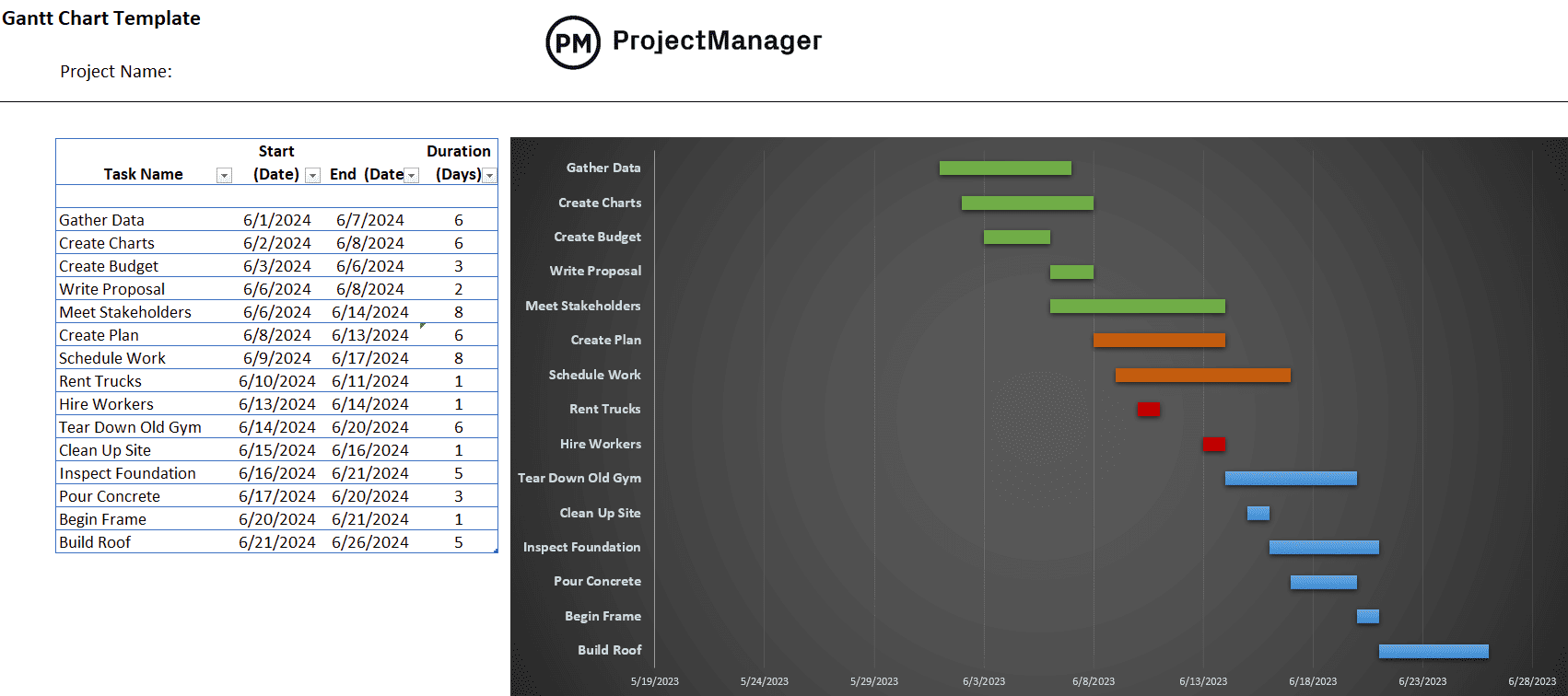
This type of template is especially useful for managing deadlines and identifying scheduling conflicts early. It provides a clear overview of how tasks overlap. A Gantt chart template saves time and promotes consistency in project planning.
Get All the Benefits of a Gantt Chart with ProjectManager
Using a Gantt chart template is a poor substitute for an online Gantt chart that’s part of a larger project management software. Templates are static documents that are simply ill-equipped to manage the dynamic nature of a project. Project managers and their teams will be constantly pulled away from their work to manually update the Gantt chart template, which is also not designed for fostering collaboration. To get the benefits of a Gantt chart, use ProjectManager, award-winning project management software with Gantt charts that are some of the best in the business.
Automatically Identify the Critical Path of Projects
Our Gantt chart software has multiple features that make it unique. Not every tool can link all four dependencies and filter for the critical path. The critical path gives project managers immediate insight into the sequence of tasks that directly impact the project’s completion date. By isolating the critical path, users can quickly identify which tasks have no slack and must stay on schedule to avoid delays. This focus allows teams to prioritize resources, monitor progress more closely and make faster decisions when issues arise.

Track Resource Allocation and Costs in Real-time
The benefit of a Gantt chart in ProjectManager goes beyond visual scheduling—it plays a key role in tracking resource allocation and costs in real time. As tasks are created and scheduled on the Gantt chart, each can be assigned to specific team members along with estimated hours and start/end dates.
This information automatically feeds into the color-coded workload and team page, showing who is available, overallocated or underutilized, so managers can reassign tasks before bottlenecks happen right from those pages. Plus, unlike other software, resource management is included in ProjectManager’s price.
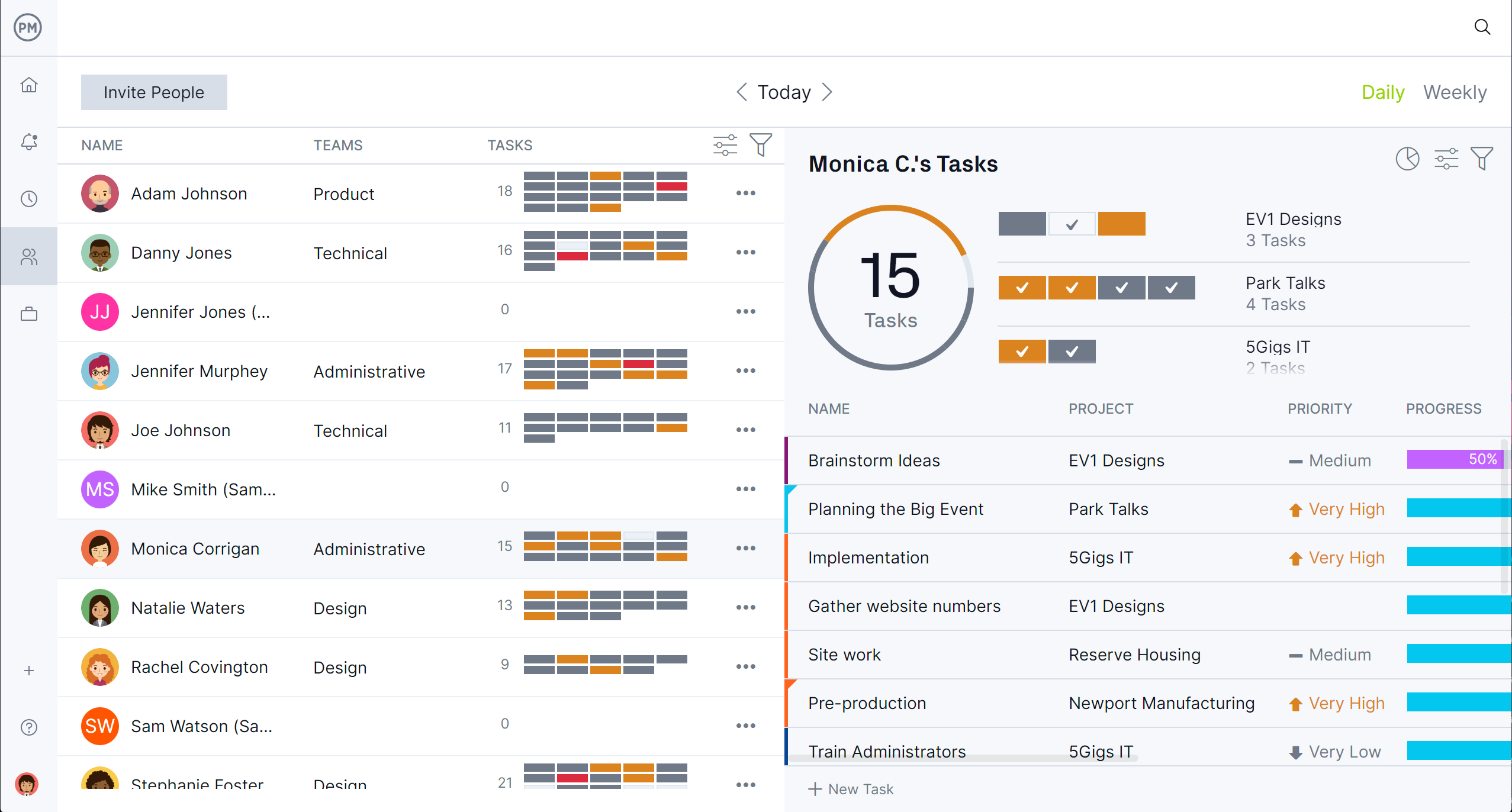
On the cost tracking side, ProjectManager links time tracked via timesheets and assigns hourly rates to the tasks displayed on the Gantt chart. As team members work and log time, cost data is updated live, giving managers a constantly refreshed view of budget performance. This real-time integration between the Gantt chart, resource usage and financial tracking ensures decisions are based on up-to-date data, helping projects stay on time and within budget.
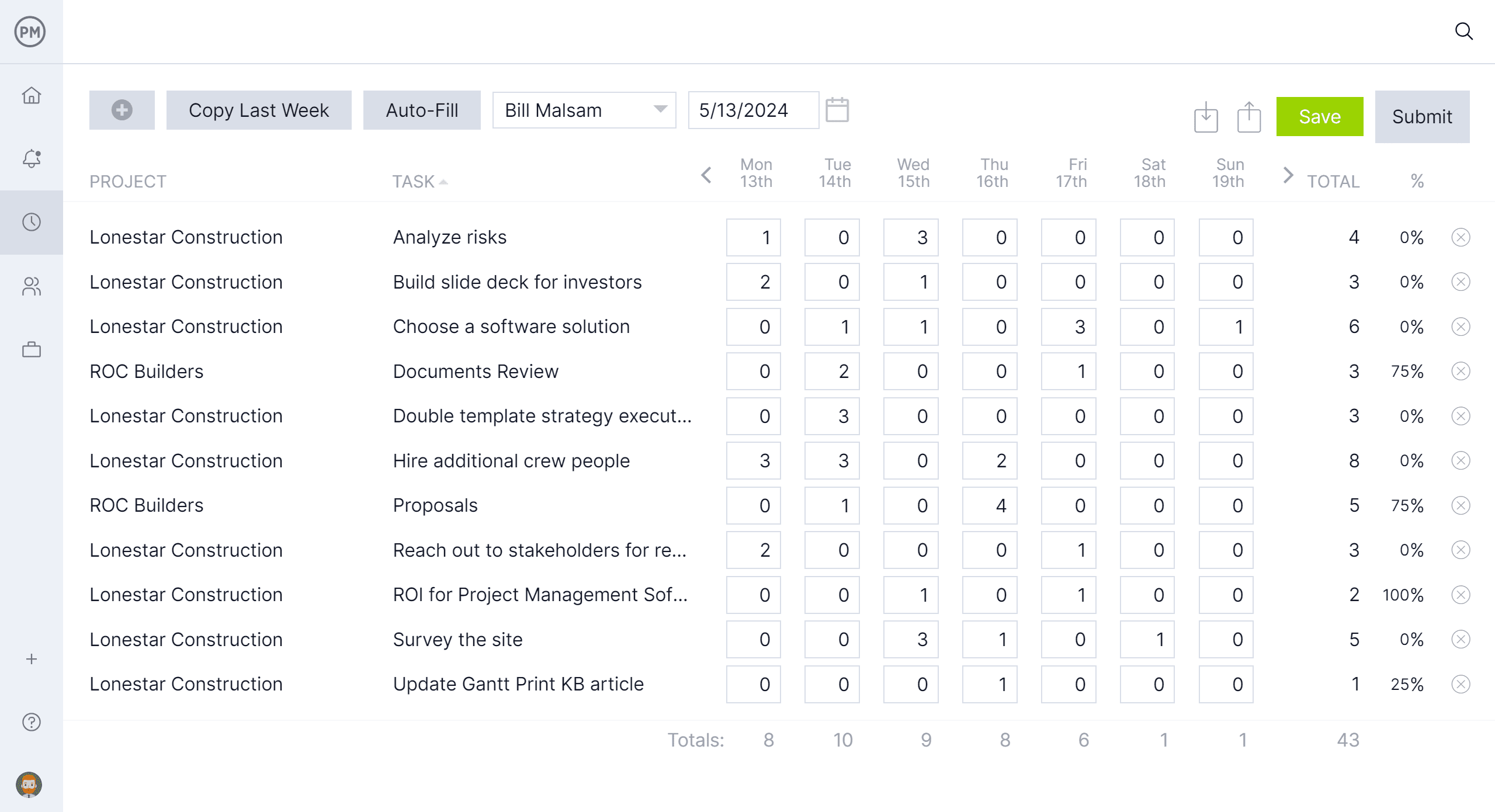
Related Gantt Chart Content
A Gantt chart’s benefits are greater than one article can capture. For readers who want to fully explore this essential project planning tool, below are a handful of recently published posts on how to make a Gantt chart, looking at the Gantt chart compared to a PERT chart and network diagram and much more.
- 10 Gantt Chart Alternatives for Project Management
- How to Make a Gantt Chart: Steps, Tools & Tips
- Gantt Chart vs. PERT Chart vs. Network Diagram
- 18 Best Gantt Chart Software of 2025 (Free & Paid)
- Why Use a Gantt Chart in Construction Project Management
ProjectManager is online project and portfolio management software that connects teams whether they’re in the office or out in the field. They can share files, comment at the task level and stay updated with email and in-app notifications. Join teams at Avis, Nestle and Siemens who use our software to deliver successful projects. Get started with ProjectManager today for free.

